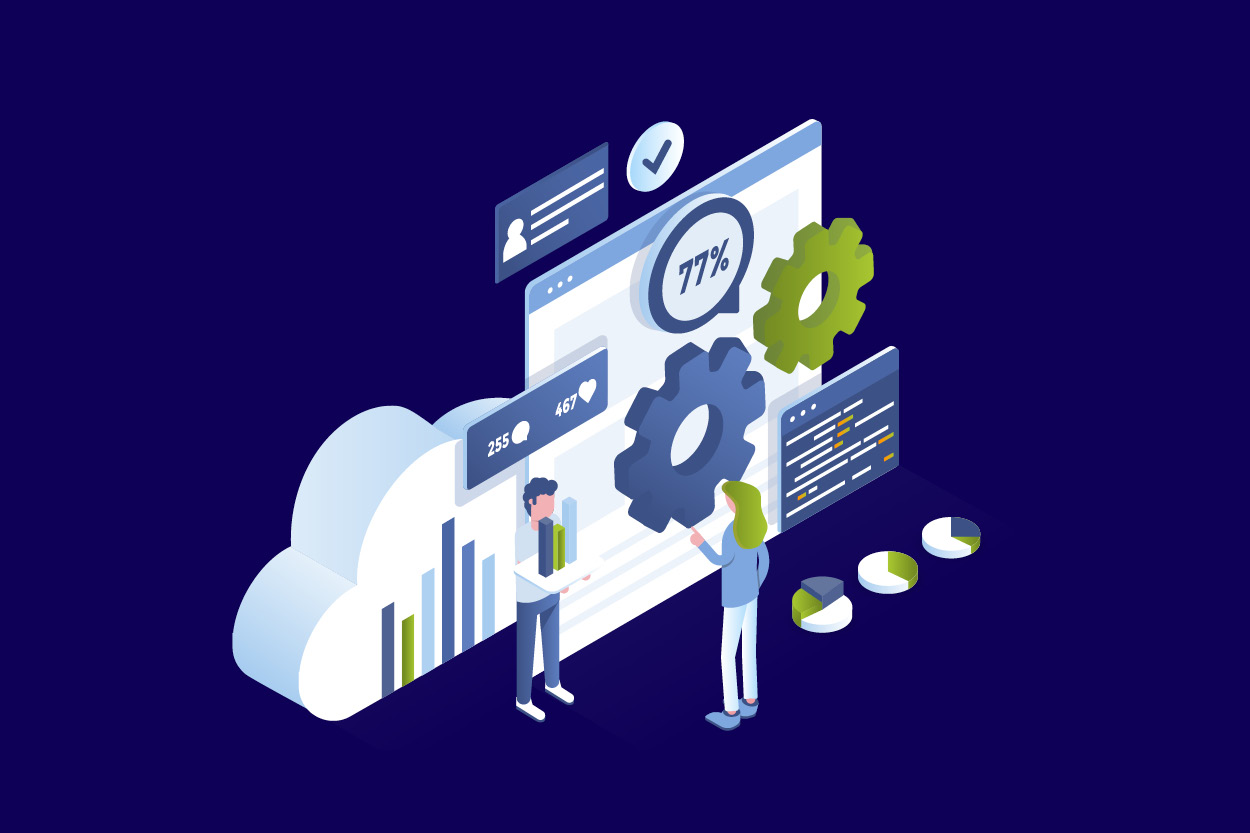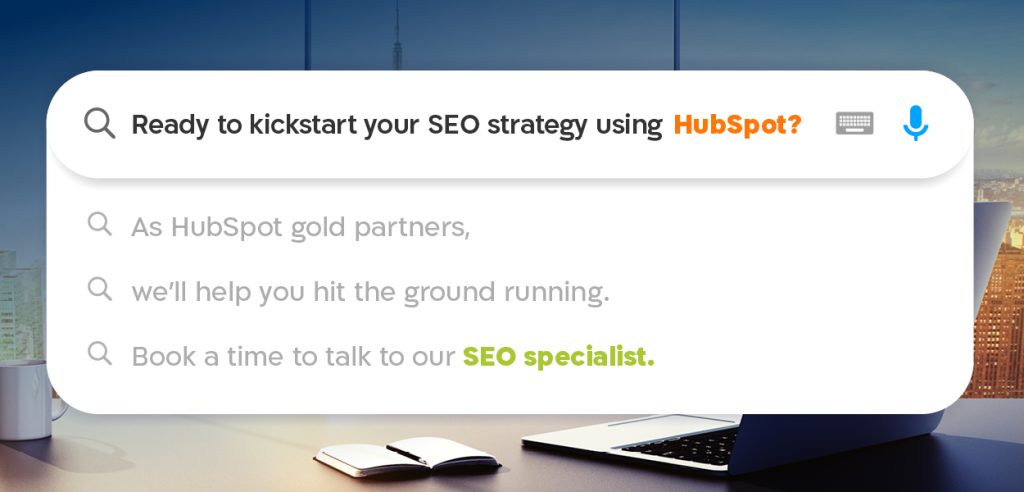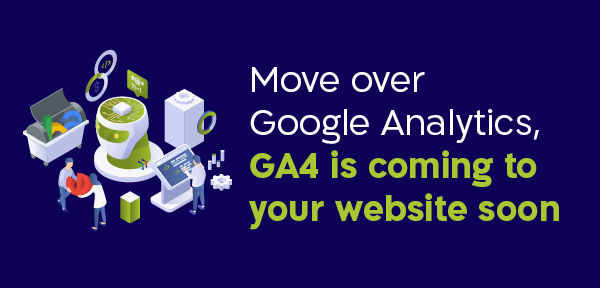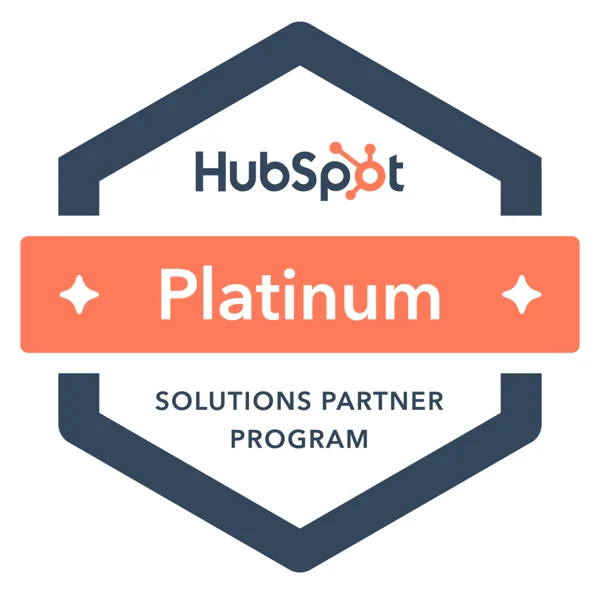The BL[OZ]
Your Growth Engine for 2026 and Beyond: No, It’s not Paid. It’s Organic Marketing
By
Liat Shaaf
, 17/08/2025
Is paid marketing enough in today’s digital chaos? How do B2B buyers really decide? Discover why organic drives trust, growth, and long-term results, while paid only accelerates.
1. Organic fits how B2B buyers actually make decisions
Every marketer understands that the B2B buyer’s journey isn’t a straight line. It’s a maze - multiple stakeholders, long evaluation cycles, and endless rounds of research before anyone ever talks to sales.
Where do buyers spend that time? On search engines, LinkedIn, industry forums, and reading trusted publications, not clicking random banner ads. That’s where organic channels like SEO, thought leadership, organic social, PR coverage, and influencer mentions come in.
When you’re showing up in those places early, you’re shaping their perception before they even start shortlisting vendors. You’re educating them on your value, building familiarity, and making it easier for them to say “yes” later.
You see, paid ads can put you in front of them fast, but organic keeps you in their line of sight throughout the entire journey, which supports business goals like higher lead quality, bigger deal sizes, and shorter sales cycles.
Here’s an example for you: I worked with an industrial equipment manufacturer that leaned into SEO and highly technical content. They started getting engagement from engineers months before RFQs were even issued. Those early touchpoints turned into warmer, more qualified leads down the line.
2. Organic builds the kind of trust you can’t buy
In B2B, trust isn’t just nice to have. It’s the currency deals run on. These aren’t impulse purchases; they’re multi-year contracts or mission-critical tools.
Sure, paid ads can grab attention. But buyers know they’re ads. That awareness puts a ceiling on how much trust you can build with them.
Now, organic content, whether it’s a deep-dive whitepaper, a webinar, or a mention in a respected industry journal, positions you as a credible authority. That credibility is often the deciding factor when procurement teams are weighing similar proposals.
The result? Bigger deals, higher win rates, and customers who stick around longer.
3. Organic content keeps working even after you’ve paid for it
IHere’s something paid will rarely give you: compounding returns.
When a paid campaign stops, so does the traffic and the leads. But a great piece of organic content can keep attracting and nurturing prospects for months, even years.
That means the budget you put into organic keeps paying you back, without needing constant top-ups. Over time, that makes your pipeline more predictable and your cost per lead lower.

4. AI, Privacy, and Platform changes are making organic even more critical
The way people find and consume information is shifting fast.
AI-driven search tools like Google’s AI Overviews and Microsoft Copilot are pulling answers from trusted, authoritative sources. If your content isn’t seen as credible, you’re invisible in those results.
Add to that the privacy changes - cookie deprecation, tighter ad targeting rules - and paid ads are getting more expensive and less precise.
Meanwhile, organic channels help you collect first-party data (subscribers, event signups, community engagement) you actually own. That’s gold for account-based marketing, personalized outreach, and nurturing high-value deals.
5. Paid Still Has a Role, Just Not as the Foundation
Don’t get me wrong: paid still matters.
If you’re promoting a product launch, driving event signups, or retargeting high-intent prospects, paid can deliver quick wins. But when paid is your only engine, your costs rise every quarter just to maintain results.
The smarter play? Build an organic foundation that runs 24/7, then use paid strategically to boost your best content and accelerate deals already in motion. That way, you get both speed and staying power.
So, you see, in B2B, where the landscape is only getting more complex: longer sales cycles, more decision-makers, new tech shaping how people discover solutions, organic marketing isn’t just about “free” traffic. It’s about meeting core business goals: generating high-quality pipeline, shortening sales cycles, increasing deal sizes, and building trust that keeps customers coming back. Paid promotion is a great accelerator. But organic? That’s your foundation for sustainable growth in 2025–2026 and beyond. Build it now, and it will keep paying you back long after the latest ad campaign ends.From SEO to GEO: How to Make Sure Your Content Shows Up in AI Engines
By
Einat Talal-Cohen
, 29/06/2025
Your brand is more than just a logo - it’s a powerful strategic tool. Discover how CEOs can leverage branding to build trust, differentiate, and drive business growth.
SEO to GEO marks a new phase in online success. For years, success online meant ranking high on Google. And that’s still true - but search itself is expanding. Today, visibility doesn’t stop with search engines.
It also means showing up in AI-generated answers from tools like GPT-4o, Gemini, and Claude.Here are some facts you need to know:
- 67% of technical queries never make it to Google
- They’re being answered instantly by ChatGPT, Claude, or Perplexity
- Google’s AI Overviews now appear in ~13% of all searches - up from 6.5% in January 2025

If your brand isn’t part of those answers, you’re invisible to a growing share of your market.
Search behavior is evolving:
- Queries are longer (23 words on average, not 4)
- Sessions are deeper (lasting around 6 minutes)
- And AI engines don’t just search - they remember, reason, and respond with personalized, conversational synthesis
SEO still matters. But it’s no longer enough on its own. That’s where GEO - Generative Engine Optimization - comes in: the next evolution in making sure your content gets seen wherever people search for answers.

Here’s how to start positioning your content to show up where it matters most:
5 Ways to Optimize Your Content for AI Engines
1. Build Topical Authority, Not Just Keyword Lists SEO taught us to chase keywords. GEO rewards expertise. AI engines prefer trusted sources that consistently publish valuable content on specific subjects. What to do: Create content clusters. Go beyond isolated blog posts and build topic ecosystems: guides, FAQs, thought leadership pieces, and deep dives. 2. Write Like You’re Explaining It to a Smart Friend AI engines favor content written in a natural, conversational tone. If it reads like stiff marketing jargon, it’s likely to be ignored by LLMs. What to do: Break down complex topics clearly and simply. Use questions, summaries, and direct answers. Write to inform, not impress. 3. Format for Easy Extraction AI engines love content that’s easy to lift, quote, and summarize. Dense paragraphs are ignored - clarity wins. What to do:- Use H2s and H3s properly
- Add bullet points and numbered lists Start with a TL;DR or summary whenever possible Think: Could ChatGPT easily use this paragraph in an answer?
Final Thought: Be Part of the Answer
SEO isn’t dead. It’s evolving. GEO is the next layer, giving your brand the power to show up not just in search engines but in the AI-generated answers people increasingly trust.Unlock SEO Automated Success: Top 7 SEO Strategies You Can Automate with Make (Integromat)
By
Orly Gilad
, 07/03/2024
Are you overwhelmed by the relentless pace of digital marketing and the constant need for SEO optimization? Imagine if you could put some of those tasks on autopilot. That's where Make (formerly Integromat) comes into play, offering a way to supercharge your SEO strategies with automation. Let's delve into seven automation strategies that can not only save you precious time but also improve your website's standing in search engine results.
1. Competitor Analysis Automation
Imagine having a secret window into your competitors' strategies, giving you the upper hand. By automating the tracking of their blog updates, keyword usage, and SEO maneuvers, you're essentially doing just that. It's like playing a strategic game where you're always one move ahead, nimbly navigating through the ever-changing landscape of digital competition. For Example: Automatically tracking a competitor’s blog updates and keyword changes.How-to:
- Set Up Triggers: Use RSS feeds or webhooks to monitor competitor blogs or websites.
- Extract Key Data: Use Make scenarios to automatically extract new content details such as titles, keywords, and descriptions.
- Analyze Changes: Use SEO tools like SEMrush or Ahrefs to analyze any new keywords or strategies they're employing.
- Send Reports: Configure Make to send periodic reports with this data to your email or Slack.
2. Streamlined Local SEO Management
Streamlining your local SEO tasks, like keeping Google My Business listings up to date and monitoring reviews, can make a big difference in how you rank locally. Automation takes the heavy lifting out of the equation, making sure your local presence is both accurate and compelling without constant manual oversight. For Example: Updating and monitoring Google My Business listings for multiple locations.How-to:
- Connect to Local SEO Tools: Integrate with tools like Moz Local or Yext.
- Automate Updates: Set up processes to automatically update listings with new hours, photos, or responses to reviews.
- Monitor Reviews: Get alerts for new reviews to respond quickly.
- Reporting: Generate regular reports on listing performance and local search rankings.
3. Image Optimization on Auto-Pilot
Automating the optimization of images on your website can significantly boost page performance. Faster loading times not only enhance the user experience—a key SEO factor—but also free up your time to focus on other aspects of your website. For example: Automatically optimizing images uploaded to your CMS. What can I do?- Monitor New Uploads: Set up a trigger for when new images are uploaded to your CMS.
- Connect to an Image Optimization Tool: Use services like TinyPNG or Kraken.io within Make.
- Optimize and Replace: Automatically optimize the images and replace the originals with the optimized versions on your site.
4. Efficient Content Research - Capitalize on Trending Topics
Automating your content research can keep you ahead of the curve. By pulling in trending topics from social media and news outlets, you can craft content that truly speaks to your audience and attracts more visitors, all while saving time on manual research. For Example: Gathering trending topics from social media and news feeds. What can I do?- Set Up Social Media Triggers: Monitor keywords and hashtags on platforms like Twitter or Reddit.
- Integrate with News Aggregators: Use tools like Feedly to pull in trending topics.
- Collect and Analyze Data: Aggregate this data for analysis to identify popular subjects.
- Generate Content Ideas: Use this data to inform your content creation strategy.
5. Automated SERP Analysis - Monitor Your Keyword Success
Automated SERP analysis allows you to monitor your keyword rankings effortlessly. This ongoing oversight offers crucial insights, enabling you to tweak and enhance your SEO strategies for better results, without the need for constant manual checks. For Example - Monitoring search engine result pages for selected keywords.What can I do?
- Use SEO Tools: Integrate with tools like Moz or Ahrefs.
- Set Keyword Triggers: Monitor specific keywords and get updates on their SERP rankings.
- Analyze Data: Collect data on rankings, featured snippets, and other SERP features.
- Adjust Your Strategy: Use these insights to refine your SEO strategy.
6. Proactive Broken Link Management - Maintain a Healthy Website
By automatically detecting and fixing broken links, you're ensuring your website remains navigable and SEO-friendly. This kind of proactive management keeps your site in top shape, enhancing both the user experience, and your SEO profile with minimal effort on your part. For Example: Regularly scanning your website for broken links.What can I do?
- Schedule Regular Scans: Use tools like Screaming Frog or Broken Link Checker.
- Integrate with Your Website: Connect these tools to your CMS.
- Automate Notifications: Set up alerts for when broken links are found.
- Quick Repair: Use these alerts to promptly fix or replace broken links.
7. Social Media Engagement Tracking - Understand Your Audience Better
Automatically tracking your social media engagement gives you a clearer picture of what resonates with your audience. This insight allows you to adjust your content and SEO strategies to better align with audience preferences, streamlining your efforts for more effective engagement. Example: Analyzing engagement on your social media posts.How-to:
- Connect to Social Platforms: Integrate with platforms like Facebook, Twitter, LinkedIn.
- Gather Engagement Data: Collect likes, shares, comments, and other engagement metrics.
- Analyze Trends: Use this data to understand what content resonates with your audience.
- Report and Refine: Generate reports for your team to review and refine your social media strategy.
Spice up your SEO strategy with HubSpot
By
Liron Ramot
, 12/12/2023
Optimizing your website for search engines is crucial. Explore how HubSpot’s SEO Marketing Software simplifies the process. From SEO recommendations to content strategy creation and seamless integration, HubSpot streamlines your SEO efforts. Leverage its tools to define target audiences, research topics, and organize keywords.

How is your website ranked?
Google’s algorithm changes daily, but as a general rule of thumb, it ranks your website on three main factors: on-page SEO, off-page SEO, and technical SEO.- On-page SEO — covers three key areas:
- High-quality content (the heart of on-page SEO)
- HTML (source code including page titles, headers, meta descriptions, image alt-text, and more),
- and site architecture elements (such as page URLs, internal linking, and more).
- Off-page SEO — social sharing, external linking, and more.
- Technical SEO — structured data, site, speed and mobile readiness.
Don’t procrastinate, automate!
Why waste time, money and manual work when HubSpot SEO Marketing Software does it all for you? It can help you plan your SEO strategy, optimize your content, and measure ROI in three key steps:- Get SEO recommendations to optimize your site- Obtain recommendations ranked in order of priority which show which optimizations will have the biggest impact
- Create an optimized content strategy to build search authority- Obtain topic suggestions based on relevance, competition, and popularity and create high quality content around your core topics
- Integrate your SEO software with HubSpot’s content management tools- Obtain search keyword data, choose canonical URLs, get estimates on which topics will yield organic traffic gains, and track key topics on your dashboard
Get topical!
As the SEO project leader, you need to decide on each page’s target audience, goal, topic, and target keywords and phrases. HubSpot’s SEO tools make it easy to research and organize topics and subtopic keywords based on your company’s areas of expertise, which serve as the foundation for all the content you create for your website. Creating relevant and up-to-date content helps your website get indexed more accurately by search engines such as Google, which analyze keyword phrases in your content, title, meta description, hyperlinks, and more.Key tips to getting started with SEO
- Crawl your website, conduct an SEO audit, and define your site architecture.
- Establish a value proposition for every page and review and edit your content accordingly
- Target your audience for that specific page (if it differs according to market segment, application, or product category)
- Update your URLs, page titles, and meta descriptions.
- Making sure that your keyword/s are included in your URL and are used throughout the page
- Incorporate and optimize relevant visual content
- Add internal and external links
Why use HubSpot for SEO?
If haven’t yet made our case for why HubSpot takes the pain out of SEO and adds the gain, here are a few more good reasons to check it out: You don’t need to be an SEO expert, because its built-in SEO tools are built with marketers in mind. There’s no need to know coding either. HubSpot handles the technicalities, so you can focus on content. Here too, HubSpot has a variety of content planning tools built into the platform. It makes it really easy to connect your marketing assets so you can track the buyer’s journey — from awareness to qualified lead to happy customer.Driving results using Technical SEO Strategy | Case study
By
Orly Gilad
, 04/10/2023
In this in-depth case study, we delve into a real-world SEO project that serves as a testament to the remarkable impact a meticulously planned technical optimization strategy can have on a website's performance.
When the new client, an impressive player in the B2B Medical industry, first approached us, we were fully aware that this was a challenge requiring our utmost dedication. In the following case study, we'll walk you through the five pivotal steps we took to completely revamp their online presence, enhancing both page health and authority in the process - bringing an increase of 25% in traffic in just a few months.
Dive into our latest in-depth SEO case study and learn how Page Health and Authority Optimization can drive real-world results. See the transformative power of a meticulously planned technical SEO strategy.Client Background
Our client, a prominent B2B business, from the medical industry, approached us with a pressing concern: their website's underperformance. The objectives were clear - bolster online visibility, boost organic traffic, and, ultimately, amplify revenue streams. The website presented several challenges, including a distressingly low Page Health score of 48 and a less-than-optimal Page Authority of 17. The Analytics showed a high bounce rate and a low average time on the page.
The mission was unequivocal: transform these pivotal metrics to drive higher organic traffic and conversions by improving its metrics.
Challenges Faced
-
Low Page Health (Score 48): The website grappled with technical and on-page SEO issues that urgently required rectification.
-
Limited Page Authority (Score 17): The website's trustworthiness and credibility fell short, impeding its ascent in search engine rankings.
-
Stagnant Organic Traffic: Organic traffic had plateaued, failing to meet conversion rate expectations.
Strategy and Approach
1. Comprehensive Technical Audit
The first crucial step was an exhaustive technical audit.
This audit unearthed a multitude of issues, including a sluggish page load speed, poor mobile-friendliness, and crawlability impediments.
We also identified and rectified:
-
Broken links, which were harming user experience.
-
Duplicate content issues that led to search engine confusion.
-
Inadequate URL structures that hindered proper indexing.
Furthermore, addressing page speed was of paramount importance. Google's Core Web Vitals update places significant emphasis on page speed, and our efforts in this regard had a profound impact on website health.
2. In-Depth Keyword Research
Simultaneously, we embarked on an extensive keyword research expedition. Our goal was to identify high-impact keywords that resonated with both the client's objectives and current industry trends. This laid the foundation for a robust keyword strategy, ensuring that the content aligned perfectly with the target audience's intent.
3. On-Page Optimization
Optimizing existing content and crafting new, keyword-rich content was the next step. This involved:
-
Enhancing meta tags, crafting compelling headings, and optimizing image alt attributes to enhance visibility.
-
Leveraging schema markup to provide search engines with structured data, enhancing search results' richness.
4. Technical SEO Enhancements
Technical SEO enhancements played a pivotal role in improving website health:
-
We submitted updated sitemaps to search engines for expedited indexing.
-
Canonicalization issues were addressed to prevent duplicate content penalties.
-
An improved website navigation system and internal linking structure provided users with an enhanced experience.
5. Content Marketing and Link Building
The final piece of the puzzle was content marketing and link building:
-
Improving internal linkage between relevant content pieces within the website, which also improved time on site.
-
We created high-quality, shareable content to attract backlinks, thereby elevating Page Authority.
-
Employing ethical link-building strategies solidified the website's authority and trustworthiness.
Results Achieved
1. Page Health Transformation
Within a matter of months, our strategies propelled the Page Health score from 48 to an astounding 95. The resolution of technical issues, especially the optimization of page load speed, resulted in vastly improved overall website performance.
2. Page Authority Ascension
Page Authority, a key indicator of trustworthiness, surged from 17 to a highly commendable 29. The remarkable improvement was primarily attributed to the augmented backlink profile garnered through our content marketing and link-building endeavors.
3. Explosive Organic Traffic Growth
One of the most remarkable outcomes of our SEO campaign was the monumental 20% increase in organic traffic within just three months. Our meticulous efforts in addressing page speed and optimizing for Core Web Vitals played a substantial role in this growth.
4. Enhanced User Experience
By addressing technical issues and optimizing on-page elements, the website now delivers a seamless and engaging user experience. This has led to lower bounce rates and extended user sessions, cementing the site's position in search engine rankings.
Conclusion
This case study serves as a compelling testament to the power of a meticulously crafted SEO plan and precise technical optimization. The transformation of Page Health from 48 to an impressive 95 and Page Authority from 17 to 29 vividly illustrates the tangible benefits of strategic SEO efforts.
By systematically addressing technical issues, optimizing on-page elements, and implementing effective content marketing and link-building strategies, we achieved remarkable results. The client's online visibility, organic traffic, and conversion rates experienced substantial growth. This case study underscores the pivotal role of SEO in enhancing website performance and achieving substantial business growth.
In conclusion, for businesses aspiring to thrive in the digital sphere, investing in SEO is not just a choice; it's an imperative step toward realizing online success.
If you're seeking more detailed information on how optimizing page speed and eliminating duplicate content can enhance your website's health and drive remarkable traffic growth, visit us to read more: https://ozglobalb2b.com/SEO/
Ready to take your website's SEO to the next level? Book a meeting to schedule your consultation and unlock the full potential of your online presence.
Is your website “Bing-ready”?
By
Orly Gilad
, 16/07/2023
This blog highlights essential points for SEO practitioners targeting Bing and Google. Topics include keyword research, social media integration, backlinks, local SEO, rich media content, and technical SEO. Stay updated with evolving algorithms for the best results. For more information, consult reputable SEO blogs and industry websites.
Here are some general points to consider when comparing SEO for Bing and Google:
- Keyword Research: While Bing and Google both consider keywords relevancy as an important factor for SEO, they may have different algorithms for how they interpret and rank keywords. It's important to research and optimize for search terms that are relevant to both Bing and Google search results. ➭ For example, After conducting keyword research, you may find that [your company solution] + USA are popular search terms on both Bing and Google. By optimizing your content for these keywords, you'll increase the chances of appearing in search results on both search engines.
- Social Media Integration: Bing tends to give more importance to social media integration and social signals, such as social media shares, likes, and comments, compared to Google. Incorporating social media strategies into your SEO efforts may be more beneficial for Bing rankings, so be sure to promote your content on social media platforms like LinkedIn, Twitter, and Facebook, encouraging shares, likes, and comments to improve Bing rankings.
- Backlinks: Both Bing and Google consider backlinks as an important ranking factor, but they may have different algorithms for evaluating the quality and relevance of backlinks. It's important to understand the differences and optimize your backlink strategy accordingly. ➭Request backlinks from authoritative industry websites or thought leaders to enhance your website's credibility and rankings on both Bing and Google.
- Local SEO: Bing tends to place more emphasis on local search results compared to Google. Optimizing your website for local SEO, by including location-specific keywords like "top Global B2B agencies in [Israel]" ;) will help optimize your local listing, and getting local citations, will be beneficial for both Bing and GMB rankings.
- Rich Media Content: Bing tends to place more importance on rich media content, such as images and videos, compared to Google. Including relevant images and videos with proper optimization may help improve your rankings on Bing.
- Technical SEO: Both Bing and Google consider technical SEO factors, such as website speed, mobile-friendliness, and crawlability. Optimizing your website's technical aspects according to the guidelines of both search engines can help improve your SEO performance on both Bing and Google.
➭ To find the technical guidelines for both Bing and Google, you can refer to the official documentation and resources provided by each search engine:
Additionally, both Bing and Google offer webmaster tools that provide insights into your website's performance, indexing status, and potential issues. These tools can help you optimize your website according to the search engine guidelines, improving your overall SEO performance.
- Bing Webmaster Tools: https://www.bing.com/webmasters/
- Google Search Console: https://search.google.com/search-console
AI vs SEO: Will AI be the end of SEO?
By
Orly Gilad
, 14/06/2023
As ChatGPT gains momentum, concerns are growing regarding its impact on everything from coding to SEO. It depends on who you ask, but the current consensus is that AI is not likely to kill Search Engine Optimization. In fact, it may actually prove quite useful in enhancing and optimizing SEO efforts. AI-powered technologies can provide insights, automate tasks, and improve the efficiency of SEO strategies.
As ChatGPT gains momentum, concerns are growing regarding its impact on everything from coding to SEO.
It depends on who you ask, but the current consensus is that AI will not likely kill Search Engine Optimization. It may actually prove quite useful in enhancing and optimizing SEO efforts. AI-powered technologies can provide insights, automate tasks, and improve the efficiency of SEO strategies. If it’s repetitive and time-consuming, AI has got you covered Why spend time on keyword research, competitor analysis, and content optimization, when you can be focusing on strategic planning and higher-level tasks? Here are three key ways AI can help:- Data Analysis AI can process and analyze large amounts of data quickly and accurately, which can help identify patterns, trends, and opportunities for SEO optimization. This can include analyzing search data, website analytics, and user behavior data to inform SEO strategies and tactics.
- Content OptimizationAI-powered content generation tools can assist in creating high-volume and optimized content. These tools can provide insights on keyword usage, content structure, readability, and relevance to improve the overall quality of content for SEO purposes.
- PersonalizationAI can analyze user data and behavior to deliver personalized search results and content recommendations. This can help improve user engagement and satisfaction, which can indirectly impact SEO rankings.

AI is your assistant, not your replacement
AI can’t replace human expertise in SEO. SEO professionals will still play a crucial role in interpreting and implementing the insights provided by AI, as well as adapting SEO strategies to changing algorithms, user behaviors, and business goals. AI tools can be powerful to support and enhance SEO efforts, but human creativity and strategic thinking will remain crucial in the SEO landscape.How can you utilize ChatGPT for SEO purposes?
Here are its suggestions:- Content Generation: Use ChatGPT to generate ideas for quick content for your website, blog, or social media posts. You can input keywords, topic ideas, or specific questions related to your SEO strategy, and ChatGPT can generate content that aligns with your SEO goals.
- Keyword Research: Utilize ChatGPT to brainstorm and generate keyword ideas for your SEO campaigns. You can input seed keywords or topic ideas, and ChatGPT can generate a list of related keywords that can help you identify opportunities for content creation and optimization.
- Meta Tags Optimization: Use ChatGPT to generate optimized meta tags, including title tags and meta descriptions, that are relevant to your target keywords and audience. ChatGPT can provide suggestions and variations for meta tags that can improve your website's click-through rates (CTRs) and search engine visibility.
- SEO Content Optimization: Input your existing content into ChatGPT to get suggestions on how to optimize it for SEO. ChatGPT can provide recommendations on improving content structure, keyword placement, and readability to make your content more search-engine-friendly.
- On-Page SEO: Use ChatGPT to get suggestions on optimizing various on-page SEO elements, such as headings, image alt tags, and URL structure. ChatGPT can provide insights on how to improve these elements for better search engine visibility and user experience.
- SEO Strategy assistance: Utilize ChatGPT to brainstorm and generate ideas for your overall SEO strategy, including content topics, and social media integration. ChatGPT can provide wide suggestions and insights that can inform your SEO planning and execution.
- SEO Troubleshooting: Input specific SEO challenges or issues into ChatGPT to get insights and suggestions on how to resolve them. ChatGPT can provide troubleshooting tips and recommendations to overcome common SEO obstacles.
 While ChatGPT can provide valuable insights and suggestions for SEO purposes, it's still essential to use human judgment and expertise in evaluating and implementing the recommendations.
SEO best practices may vary depending on your specific industry, audience, and search engine algorithms, so it's crucial to conduct thorough research and consult with SEO professionals to build a comprehensive SEO strategy.
While ChatGPT can provide valuable insights and suggestions for SEO purposes, it's still essential to use human judgment and expertise in evaluating and implementing the recommendations.
SEO best practices may vary depending on your specific industry, audience, and search engine algorithms, so it's crucial to conduct thorough research and consult with SEO professionals to build a comprehensive SEO strategy.
Watch Google's update on Search Generative Experience:
Move over Google Analytics, GA4 is coming to your website soon
By
Orly Gilad
, 17/05/2023
You’re probably familiar with Universal Analytics, the Google Analytics (GA) tool that has been around for more than a decade, providing website owners and publishers with insights into their website’s performance. But in July 2023, it’s being replaced by GA4. Are you ready for the switch?
Don’t say you didn’t see it coming
In October 2020, Google announced that it would discontinue Universal Analytics and shift to Google Analytics 4 (GA4). But don’t worry, we’ve got you covered with our step-by-step guide on how to switch from Universal Analytics to GA4, discuss the differences between these two versions of GA, and highlight some of the benefits of GA4.
The clock is ticking
From July 2023, the free version of GA will no longer gather data. That means if you want to continue using Google Analytics, you must switch to GA4. Take note, you will be able to access your previously processed data in your Universal Analytics property for at least six months. However, you won’t be able to view your Universal Analytics reports or interact with your analytics data via the API. This change will affect all website owners who rely on their Google Analytics account as their main data source for audience demographics, behavior, and areas of interest.What’s the difference between Google Analytics and GA4?
If you want to know how your users are interacting with your website or app, you need effective event tracking which allows you to track specific user interactions – such as button clicks, video plays, and form submissions. In the past, you needed to set it up manually, adding code snippets to your website or app to track specific events, which was challenging to manage. The good news is that G4 has already set it up for you and you can configure event tracking without coding. While the focus used to be on calculating site sessions and monitoring audiences, it’s now moved to what audiences are actually doing on your site. GA4 offers parameters, enhanced measurement, and in-platform event creation (replacing action, category, and label). When setting up the data stream, you can turn on enhanced measurement to automatically collect page views, downloads, outbound clicks, video engagement, and scrolls. Conditions and parameters (which provide context on the user or user actions) cover events that don’t fall under enhanced measurement. Take note that you can mark events as conversions which eliminate the need for goal setup.There are four types of events covered in GA4:
Automatically collected events GA4 automatically collects pageviews, scrolls, and outbound clicks without the need for additional coding.
Enhanced measurement events
Here’s where things get a bit more complex. These events usually track interactions such as page views, file downloads, form interactions, scrolls, outbound clicks, site search, and video engagement that can’t be easily by standard events and require extra coding before GA4 can collect these events and provide reports.Recommended events
Behind the scenes, GA4 gathers data on your site activity and makes recommendations on events you may want to consider tracking, such as frequent outbound link clicks.
New G44 features
- Link to Google Merchant Center, Google Optimize, and BigQuery natively and for free
- Create custom reports in GA4 and add those reports right to your navigation
- Custom dashboards combining two tools in one —taking the data from UA and Data Studio
Gee, four sounds great!
Switching to GA4 allows you to take advantage of all the new advanced features and get the most out of your data. There isn’t much time left to make the move, so if you haven’t already started, it’s time to make the switch now. Ready to make the switch? Our SEO team will walk you through it.It’s not you, it’s Google!
By
Orly Gilad
, 02/05/2023
Did Your Search Engine Rankings Drop Suddenly? It’s Not You, it’s Google! When you’ve worked hard to get your website ranking high in Google’s results, it can be disturbing when they experience a sudden drop. We’d tell you not to panic, but it doesn’t really work. Actually, if you see other webmasters panicking, chances are you should be too.
 A good place to start is the Google Search Console. You’ll find that it’s a valuable tool for tracking and optimizing your website's rankings in Google search results. Take a look at your analytics and check your manual action report.
Making major changes to your site may have an impact on your rankings. Take a look at your website traffic to see if there are any noticeable changes or trends. Reviewing your site statistics may provide some useful data and actionable insights.
By leveraging the information provided by the console, you can make informed decisions and implement effective strategies to improve your website's performance and rankings.
A good place to start is the Google Search Console. You’ll find that it’s a valuable tool for tracking and optimizing your website's rankings in Google search results. Take a look at your analytics and check your manual action report.
Making major changes to your site may have an impact on your rankings. Take a look at your website traffic to see if there are any noticeable changes or trends. Reviewing your site statistics may provide some useful data and actionable insights.
By leveraging the information provided by the console, you can make informed decisions and implement effective strategies to improve your website's performance and rankings.
























